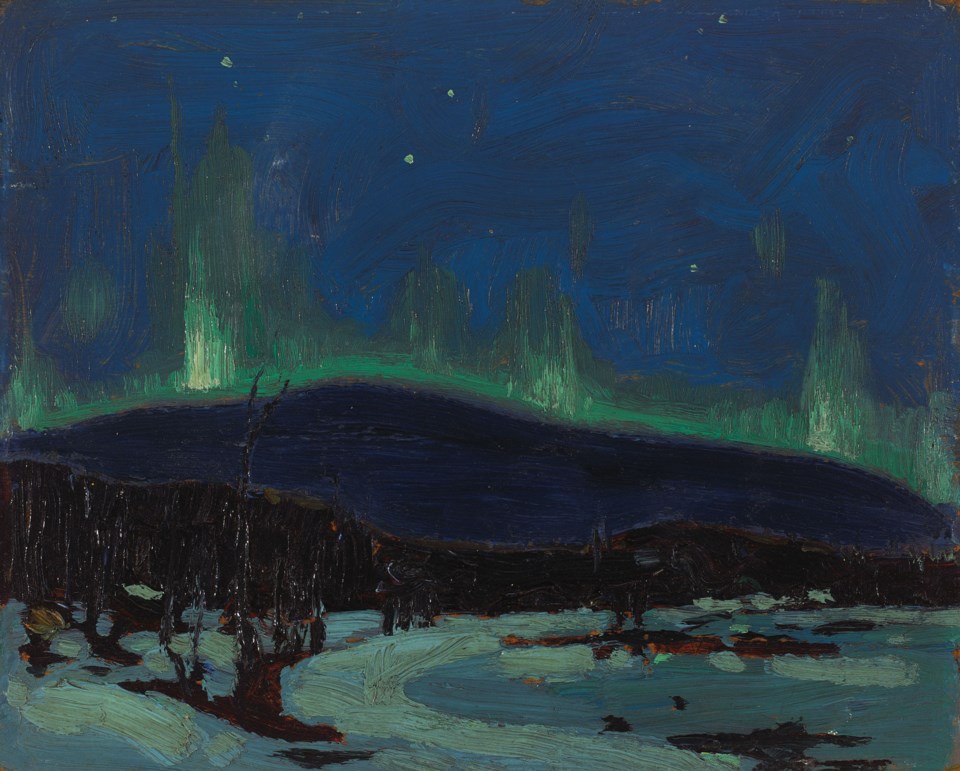Tom Thomson died on July 8, 1917, roughly 16 months before the end of the First World War. His career spanned a mere half-decade, yet in that time he produced roughly 400 oil sketches and 50 large, canvas-based works. His legacy far outstrips his 39 years on Earth, to the point where he’s considered an honorary member of the Group of Seven: Canada’s Mount Rushmore when it comes to artists.
Thomson remains one of our nation’s most iconic painters, and his skill will be celebrated once more at a first-class exhibit coming soon to Whistler.
Beginning June 29, the Audain Art Museum will present "Tom Thomson: North Star." This assemblage of more than 100 paintings is the largest collection in museum history, including everything from stormy summer days to stark wintry scenes and everything in between. Guests will be able to experience the full arc of Thomson’s creative process and the varied qualities of his favourite Ontarian landscapes.
Dr. Curtis Collins, director and chief curator of the Audain, believes there are two main aspects of primary importance to Thomson’s work.
“First is the manner in which he rendered landscapes using very high-key colours and an impasto effect,” he explains. “You can see the paint [appearing to come off] the surface of the canvas, so that was quite radical in its time with regards to the traditions of Canadian painting.
“Secondly, Thomson used the landscape as a way to symbolize Canada's emerging identity. Canada, at that point in time in the early 20th century, was just coming into its own as a sovereign nation. Essentially, he’s taking that post-impressionist tradition from Europe and grafting it onto the Canadian landscape both in the treatment of paint and what is being captured.”
Artistic lineage
One thing you’ll rarely see in a Thomson painting is people. His material speaks to a certain solitude and intimacy with nature—themes that are bound to resonate with most Sea to Sky folk. Thomson himself would likely have enjoyed Whistler, for he was a lifelong fisher, canoeist and outdoorsman.
The introduction of North Star will also complement the Audain’s existing showcases of Emily Carr, E.J. Hughes and Gordon Smith. Some parallels are obvious: for instance, Carr and Thomson both focused on translating the essence of their environment to canvas. Yet Carr’s portrayal of majestic forests is a striking contrast to Thomson’s weathered lakes and rocky Canadian Shield terrain.
The storylines don’t stop there. Thomson heavily influenced the Group of Seven (Lawren Harris, Franklin Carmichael, A.Y. Jackson, J.E.H. MacDonald, Frank Johnston, Arthur Lismer and Frederick Varley) in their approach to landscape painting, while Carr, Hughes and Smith all have professional connections to Harris.
“We can see there's a certain artistic lineage that grows out of Thomson’s work and continues well throughout the 20th century,” says Collins, who hopes that Audain guests will gain a deeper appreciation for Carr and company when their material is viewed in the context of what Thomson did.
An elevated profile
Top-flight exhibitions like North Star are usually two to three years in the making. Its artworks were brought together mainly by the McMichael Canadian Art Collection and National Gallery of Canada, which then reached out to Collins.
“That speaks to the profile the Audain has gained over its very brief history of eight years,” Collins remarks. “Now, I am consistently getting calls from major institutions across Canada to host their touring shows of great consequence. Another big show that we had was the Jean Paul Riopelle display from the Montreal Museum of Fine Arts [in 2021 and 2022].
“We're now in league with institutions that are considerably larger than this one and located in major urban centres. The fact that we're treated as equals is very reassuring because we only have about a tenth as many staff as places like the McMichael [north of Toronto].”
Whistler is, in many respects, a world-class location. The quality of ski runs on both mountains set a certain benchmark, as do the trails of Callaghan Valley and some of the village’s hotels and restaurants. The Audain Museum has likewise proven to be a notable establishment, punching well above its weight class in its ability to attract high-calibre exhibits.
Simultaneously, Collins and his team strive to maintain their long-term appeal to both visitors and locals alike.
More information about Tom Thomson: North Star, which remains at the Audain until Oct. 14, can be found at audainartmuseum.com/exhibitions/tom-thomson-north-star.




